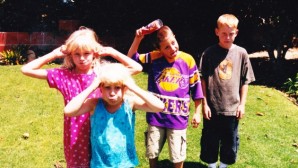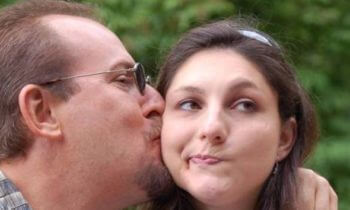The problem with not forgiving others is that un-forgiveness can lead to bitterness, envy, anger, resentment and a number of other perversions that inhibit us from living our lives.
Un-forgiveness the root for bitterness
We probably all have known, or have been acquainted with a bitter person. It is not hard to find bitter people. Just look for the person that is angry, uptight, and whose conversation always turns to the negative no matter what the topic may be.
How many of us wake up and say: “I just can’t wait to find some bitter angry person and spend the day with them”. No of course not, it’s just the opposite. These are the people we often avoid, or come up with polite ways to avoid spending time with them.
In the 80’s and 90’s I spent many years working as a youth pastor, live-in drug counselor, and running a foster home. Through these years I watched hundreds of children and adults become set free through the power of forgiveness.
The first step in the process of forgiveness is to realize that we are not the only ones wronged, but that we may have wronged others as well. Forgiveness is a two-way street, and we both need to forgive and be forgiven.
In closing we are going to take a few minutes, and cover some steps to help us learn how to forgive and receive forgiveness
7 helpful forgiveness tips
Forgiveness tips 1. Stop talking and start doing.
The first step is to realize that for us to live life and meaningful lives, forgiveness is not an option but a necessity. The Bible tells a story where the disciples came to Jesus and asked how many times they had to forgive those who offend them.
Jesus’s reply probably astounded them. He said that we didn’t have to forgive others a few times or even seven times. He told them we must forgive people seven times seventy, even if it happens all in one day. As a matter of fact, Jesus placed such an importance on forgiveness that his entire gospel was built on his sacrifice on the cross for the sins of the whole world. Now that’s a lot of forgiveness.
Forgiveness tips 2. Write it down.
One great way to start the forgiveness process is to write down those we need to forgive. One might also write down those in whom we have wronged and how we can seek their forgiveness.
Forgiveness can often be the single largest turning point in the lives of every child, teenager, or adult. The most happy and content people seem to be those who have learned to forgive both themselves and others.
Just think about the people around you who are living full and fruitful lives. I would bet that these people are most often those who have learned how to forgive, and how not to hold things against others.
Forgiveness tips 3. Forgiveness can be a two-way street.
Not only do we have to forgive others, we must be willing to ask others to forgive us as well. That is what reconciliation is all about. Forgiveness is a two-way street. We must learn not only to forgive, but how to receive forgiveness in turn.
Other people are not the only ones responsible for our hurts. As we walk through life we will say, and do things, that offends people, even to their core.
We are not talking about walking around on eggshells wondering if we will say or do anything that offends people. We do however need to be careful, especially around people we are close to, and must be willing to eat our pride, and ask for forgiveness when we wrong others.
Forgiveness tips 4. Stop assigning blame.
The next step is to not assign blame for your un-forgiveness. To say, “I’m sorry, but YOU hurt me”, is like saying, “I am sorry, but it’s really all your fault.”
Regardless of the fault, we must learn to forgive, and to ask for forgiveness. We are all unique people and there are many reasons why we do what we do. Some people never forgive, because they believe the other person did something out of spite, or were trying to hurt people on purpose. However, most of the hurts we cause others can be attributed to the fact that we are just plain selfish people.
Forgiveness tips 5. Remember not forgiving others maybe a natural response.
It’s like the story a friend of mine told about two babies sitting next to each other on high chairs. One had been there for a while with his little teething biscuit happily gumming away. The next child arrives, and is given a big shiny new teething biscuit. The one with the half eaten biscuit looks over, and sees the baby next to him with this new big biscuit. The child looks back at his half eaten biscuit, and then back to the other baby’s new biscuit.
In a matter of seconds the first baby throws the half eaten biscuit away, and then attacks the other baby for his bigger biscuit. My friend said that his son had grabbed the others shirt, and nearly pulled the other baby out of his high chair. This was all because one baby’s cookie was bigger than the other.
Now the babies parents did not have to teach the child to be selfish and greedy, he learned it all on his own.
We use this story because it illustrates a good point. Humans are not born with a natural tendency to be good, kind and selfless. Parents don’t have to teach their children how to be bad; they have to teach them how to be good.
Forgiveness tips 6. Quantify the hurt.
The next step is to try to quantify the hurt. To quantify the hurt we need to get through all the emotions, and negative feelings, and get to the root of our problems. We must ask ourselves, “Just what did the person do to me”, or “What did I do exactly that offended the other person.”
We need to uncover the specific areas of hurt, and pin point the reasons we are feeling the way we are. As the saying goes you must compare apples to apples and oranges to oranges.
It is vital that we don’t get everything all mixed together, but try to focus on the exact issue that caused the hurt or problem. Once we have identified the problem we can come to a more correct conclusion to rectify the situation.
Forgiveness tips 7. Now, ask.
The next, but not last, step is to actually go to the person and ask for forgiveness. If it is impossible to physically meet the person, than a phone call or letter may do the trick.
Whatever the means we need to go to the person, and verbally tell them we forgive them, and allow them the chance to forgive us, if necessary. Sometimes restitution must be made.
Restitution is when we make things right, like returning things we have stolen, repairing things we have broken, or just righting a wrong which we have caused. This is one way to help solidify the forgiveness in our lives as well as those we have forgiven.
Finally walk in forgiveness.
Now the above are only basic steps, and there can be many other steps that need to be taken in this area. Every situation differs, our relationships change, and life can be fraught with many complex issues. However these are good places to start, and can help us navigate through the tough world of living a life of forgiveness. As Mother Teresa once said, “If we really want to love, we must learn how to forgive.”
Forgiveness, Key to Strong Relationships: Part 1
Forgiveness, Key to Strong Relationships: Part 2
Forgiveness, Key to Strong Relationships: Part 3
Forgiveness, Key to Strong Relationships: Part 4




